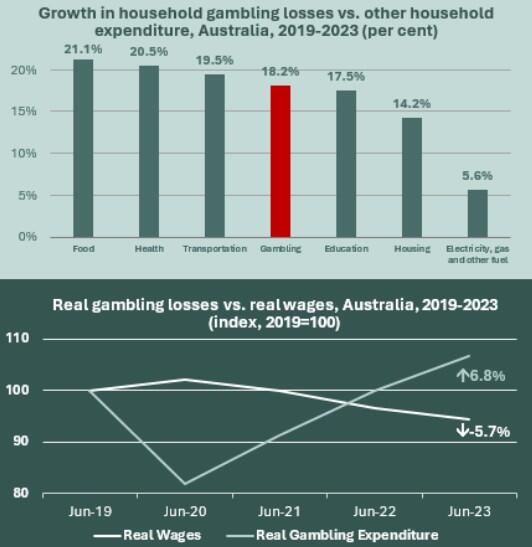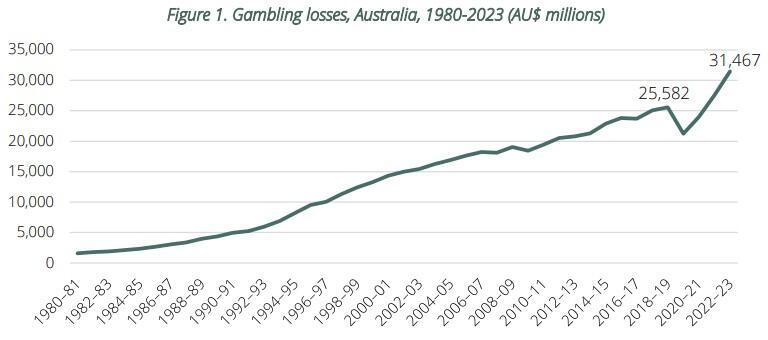A new research report has revealed Australian gambling losses accumulated to more than $31.5 billion across FY23 - that’s more than the net spend by the government each year on aged care and an average loss of $1,527 cash for each adult in the country.
Commissioned by the Alliance for Gambling Reform, research house Equity Economics found in its Gambling in Australia's cost of living crisis: the unspoken black hole in household budgets report that real money losses across betting houses, casinos and pokies have risen 6.8% - while real wages dropped 5.7% - between 2019 and 2023.

An even more sobering revelation is that five years of data extrapolated for the report included the COVID-19 period that saw a significant, yet temporary decline in gambling participation and losses as many gambling venues and sporting codes were closed due to restriction measures.
So large are Australia’s annual gambling losses, Alliance for Gambling Reform says, they now eclipse what governments spend on aged care ($28.3bn) and rivals the $35.2bn spent on the National Disability Insurance Scheme (NDIS) ($35.2bn).
“In fact, household expenditure on gambling has risen faster than spending on utilities, faster than spending on education and faster than spending on housing,” the alliance says.
The sharpest rise in gambling can be seen immediately post-pandemic.

Family devastation
The report showed that gambling has devastating impacts on Aussie households, with the harm directly impacting an individual gambler indirectly negatively affecting at least six others, with moderate-risk gambling affecting three.
“Of course, families also experience significant financial stress, insecurity and loss from having a gambler in their household – both immediately as they balance their weekly budgets and over the long-term.
The Alliance is calling on governments to help households plug the hole and that urgent action is required to reduce the impact of gambling on Australian families in this cost-of-living crisis.
“Evidence-based regulatory reforms would have minimal cost to the budget, would be non- inflationary and would provide significant, lasting cost-of-living relief.”


